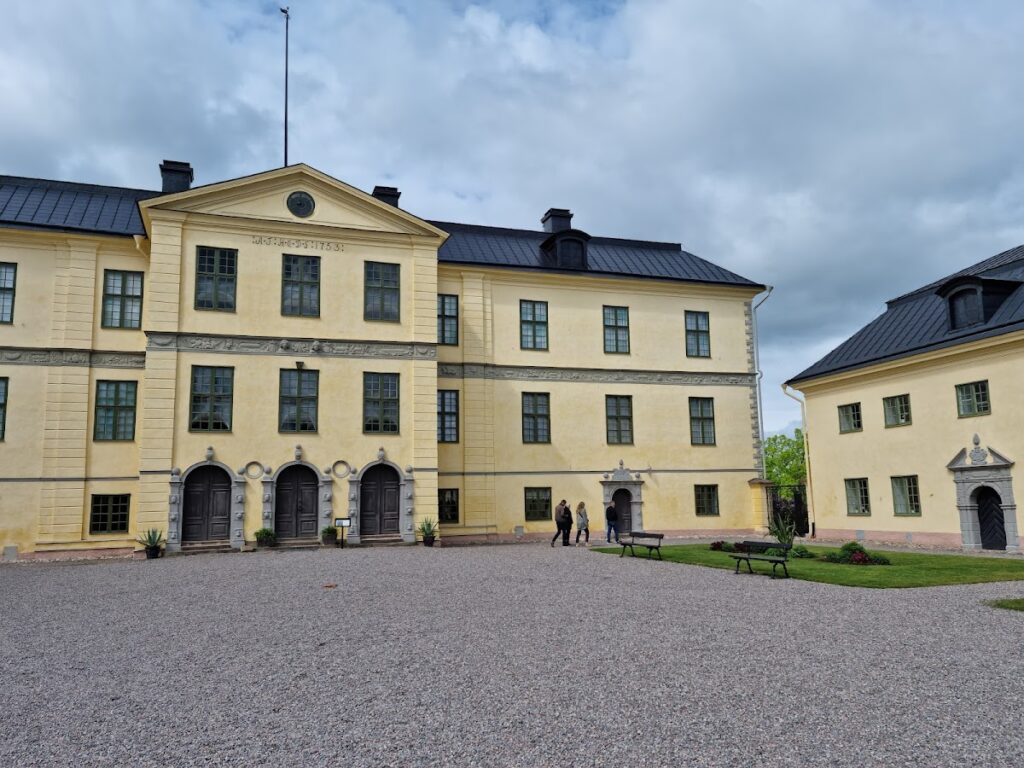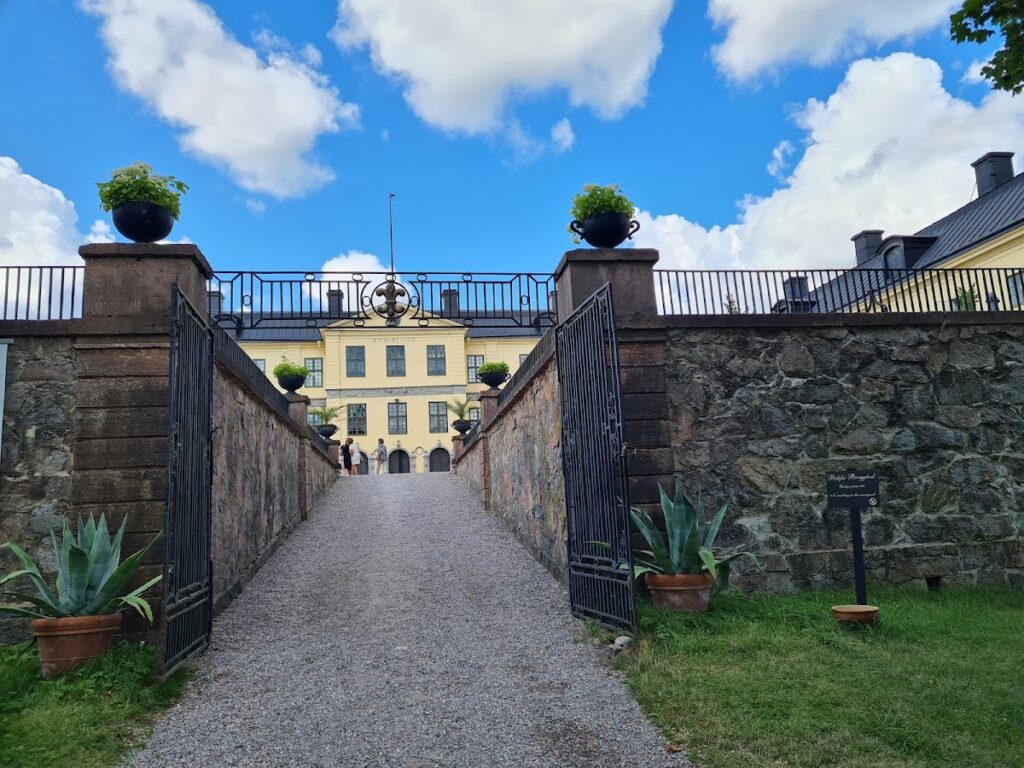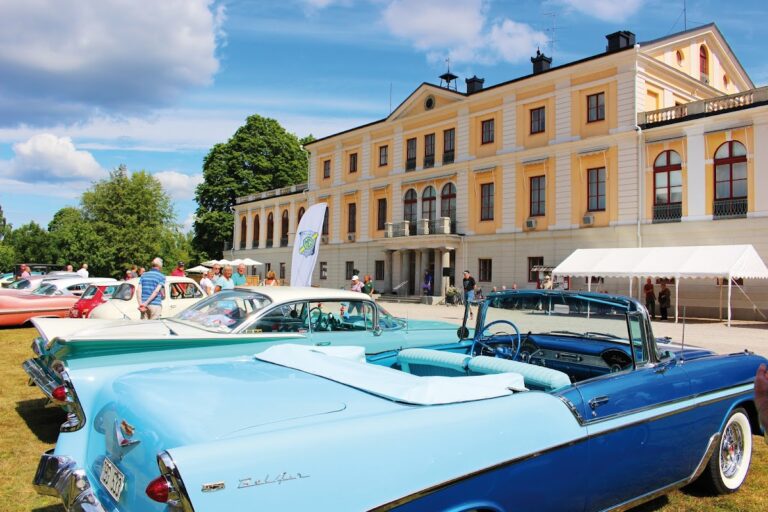Löfstad Castle: A Historic Swedish Noble Residence
Visitor Information
Google Rating: 4.3
Popularity: Medium
Google Maps: View on Google Maps
Official Website: lofstad.se
Country: Sweden
Civilization: Unclassified
Remains: Military
History
Löfstad Castle is situated in Kimstads socken within the municipality of Norrköping, Sweden. It was established by Swedish nobility and reflects a long history of aristocratic residence and development on the site.
The estate is first recorded under various spellings such as “loeffstadhe” or “Læpstadhum” in documents dating back to the 15th century, specifically between 1422 and 1478. At that time, an original manor house stood west of the present castle. This early residence likely formed a square courtyard, featuring a main building with a cellar and two single-story stone wings. Of particular historical interest, the eastern wing has retained much of its medieval external appearance, offering a direct link to the estate’s earliest phase.
The castle as it stands today was built during the mid-17th century, approximately from 1638 to 1660. It was constructed by Field Marshal and Count Axel Lillie, alongside his wife Christina Mörner, on land that had been in the Lillie family’s possession since at least 1510. This period marked a significant transformation from the medieval manor to a more modern noble residence in line with contemporary architectural movements of the time.
In the decade following the castle’s initial construction, between 1670 and 1680, it underwent extensive renovation under the direction of architect Mathias Spihler. Modifications included the addition of a risalit—a projecting section of the façade featuring three window axes—to house a new stairwell, the elevation of the towers, and the replacement of the roof with a style known as säteritak, which is a type of hipped roof typical in Swedish manors. During this modernization, original façade paintings were covered with limewash, altering the castle’s external appearance.
A fire in 1750 necessitated repairs to the roof, which was then rebuilt in a style representative of that period. Since these 18th-century changes, the exterior of Löfstad Castle has remained largely stable.
Ownership of the castle passed through several prominent Swedish noble families over time. After the Lillies, it came into the possession of the De la Gardie family, followed by the von Fersen and Piper families. The final private owner was Countess Emilie Piper, who lived from 1857 to 1926. Upon the deaths of Emilie and her sister, the estate was bequeathed in 1940 to two institutions: the Swedish House of Nobility (Riddarhuset) and the Östergötlands Museum. Two years later, in 1942, Löfstad Castle was opened to the public as a museum preserving its historical legacy.
In the 19th century, Countess Sophie Piper enhanced the grounds by establishing an English-style park surrounding the castle. Within this park stands a marble memorial dedicated to Marshal Axel von Fersen the Younger, a notable family member who lived from 1755 to 1810. This monument was erected by his sister, Sophie von Fersen, highlighting the estate’s connection to important figures in Swedish history.
Remains
Löfstad Castle’s present layout consists of a central main building flanked by two long wings, each ending with towers at their outer ends. The main building rises three stories on the courtyard side and includes a basement level that faces the park. This arrangement reflects the design sensibilities typical of Swedish noble residences from the 17th century.
Many elements of the original masonry from the castle’s 17th-century construction remain intact. This includes portals carved of stone, a sandstone frieze decorating parts of the façade, and the banquet hall, all of which retain their historical fabric and contribute to the castle’s authentic atmosphere. Notably, the old eastern wing of the former medieval manor is preserved externally, serving as a tangible remnant of the estate’s earliest architectural phase.
The roof, once a high gable with stepped gables characteristic of 17th-century Swedish design, was replaced following the fire in 1750 with a style more typical of that era. The external appearance resulting from this change has been carefully maintained since then, offering a well-preserved example of mid-18th-century roof construction on a noble estate.
Surrounding the castle is a garden and the English-style park developed around 1800. This landscaped setting complements the historic buildings, integrating natural beauty with the architecture.
Inside, the furnishings primarily date from the late 19th and early 20th centuries, reflecting the final phase of the castle’s use by private owners. Among the castle’s notable interiors is a library housing about 5,000 volumes. The collection of portraits on display predominantly features former owners and their relatives, preserving personal histories alongside the architectural heritage.
Today, the northern wing accommodates a restaurant open all year, while a nearby old smithy building hosts a café during the summer months. These adaptive uses ensure the preservation of the castle’s functional spaces within the historic fabric.
Löfstad Castle is listed in the Swedish cultural heritage registry, recognizing its significance, and is accessible to the public with guided tours that showcase its historical and architectural importance.








